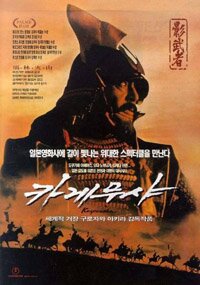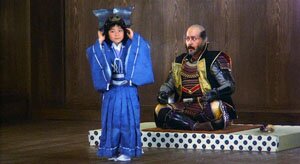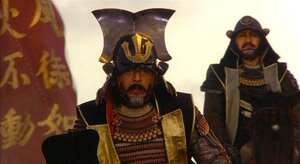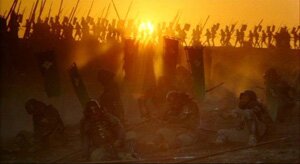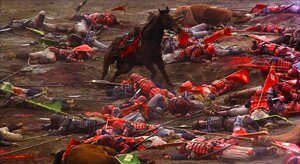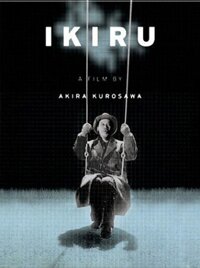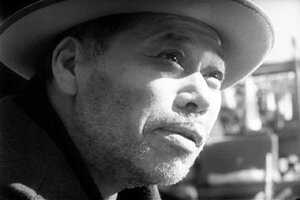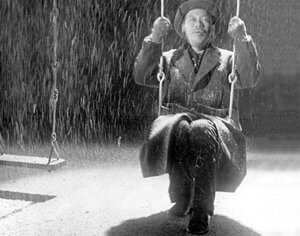When I posted Ikiru as part of 20 Movies a few months ago I made reference to the difficulty many people have with movies that are in black and white and movies that are called foreign (and movies that are both, like Ikiru). I mentioned I understood the difficulty, so I’m going to try to explain myself.
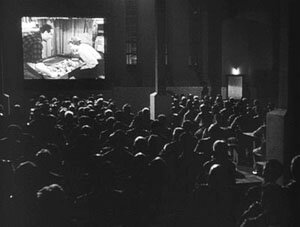 When we say we don’t like a movie that is in black and white we don’t really mean we have a problem with it being a monochromatic movie. What we mean is that generally black and white means an older movie and, with an older movie, most of us have to make cognitive adjustments. As a movie begins, that means an impediment to “getting into” the film.
When we say we don’t like a movie that is in black and white we don’t really mean we have a problem with it being a monochromatic movie. What we mean is that generally black and white means an older movie and, with an older movie, most of us have to make cognitive adjustments. As a movie begins, that means an impediment to “getting into” the film.
(People make black and white movies today but when we see those we understand immediately that it is an aesthetic choice. We accept it as part of the film’s craft. With older movies, black and white means colour wasn’t available as an option or that it was an economic decision. So when we say we don’t like black and white we are saying we’re resistant to the movie’s age.)
What does cognitive adjustment mean?
By cognitive adjustments I simply mean we can’t just watch a movie unfold, as we can with most new release movies. We are use to them being in colour; we are use to certain styles (directing, editing, acting). We are use to a certain cultural sensibility. If a movie doesn’t fit with what we’re use to, we have to adjust to accommodate it.
When we see an older movie we usually see different styles; different sensibilities. For myself, having grown up watching a lot of old movies at home on TV with my mother, I am use to these movies. I don’t need to make any adjustment other than to note it is an older movie.
Were I not the age I am and were I not to have had that experience, I would have to make a big adjustment. Those movies would strike me as odd.
The history of film and of acting can be seen in older movies, more so the older they get. We can see how theatre informed films initially and it was only over time that an awareness of film’s intimacy came about. It took time to realize there was no back row to be played to.
As an example of a cognitive adjustment I had to make, I can look at 2005’s Pride and Prejudice. As I first started watching that movie, I resisted it. The style and pace were not what I associated with Jane Austen. In my head, Jane Austen was associated with her novels and, treated visually, BBC productions (seen on the CBC or PBS). Seeing those kinds of TV treatments from decades like the 1980s and 1990s, I anticipated a slower paced, almost literal approach. The movie I saw in 2005 didn’t line up with that. I had to make an adjustment before being able to appreciate the movie I saw.
I think it is a human trait to resist such adjusting. Our first response is to abandon what we’re encountering and simply move on to a different story, a newer movie.
Reading foreign films — subtitles
It is the same thing with a “foreign” movie. For most of us in North America, foreign means non-English. Those foreign movies come from different cultures and societies, so we need to make a cognitive adjustment. Those movies aren’t in English; many therefore come with sub-titles. So there is a linguistic barrier. The sub-titles present yet another barrier – we have to read to understand the dialogue. When we see the words at the bottom of the screen, our eyes drift down to read the words thus taking our attention from the image that is being presented.
The thing is that with most movies, certainly the good ones, you don’t really need the words. The image tells it all; it’s in the acting. Still, our eyes go to those words and we try to read.
Cognitive adjustments are needed to watch a foreign movie.
This why so many people resist such movies whether they’re black and white, foreign, or both. Interestingly, if you see enough of them you do make those adjustments, unconsciously, and it is relatively easy to watch and appreciate the movies. But it is difficult to initially get past those barriers.
There is a fascinating irony or conundrum in all of this. The best movies always demand cognitive adjustments because they ask us to see things in a new way. They make us change the way we think. The difference with black and white and foreign movies is that they are unintended adjustments. They are not a part of the art of the movie we see. They are adjustments required by time and culture.

